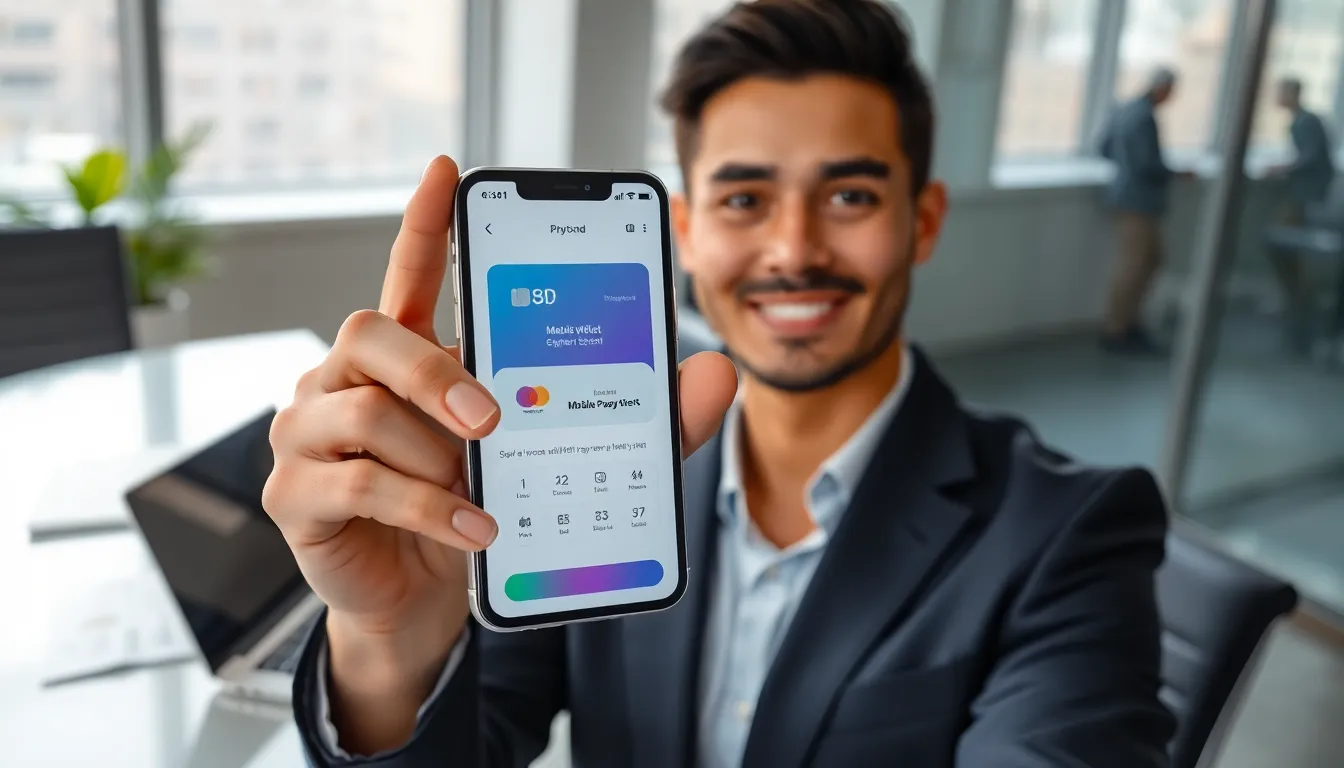When it comes to convenience, taking card payments via mobile phone has stepped up in ways that make even the most seasoned cashiers drool with envy. Imagine processing a payment while chatting with a customer, perhaps casually sipping your coffee. It sounds futuristic, right? But it’s here, and better yet, it’s making business transactions smoother and quicker. In a world where wallets are becoming less of a necessity, and phones reign supreme, understanding how mobile payment solutions work isn’t just smart, it’s imperative.
Table of Contents
ToggleUnderstanding Mobile Payment Solutions

Mobile payment solutions enable businesses to accept payments through smartphones or tablets. This approach covers a range of technologies, including near-field communication (NFC), QR codes, and payment processing applications, making transactions easier than ever. NFC allows devices to communicate when they are in close proximity, letting customers simply tap their phone on a terminal. Meanwhile, QR codes provide an alternative for users who prefer scanning a code to complete a transaction. Aggregator services like PayPal or Square have revolutionized how companies think about cash flow, emphasizing the need for instant, hassle-free transactions in today’s fast-paced economy.
With these innovations, businesses can take advantage of increasing smartphone penetration. Global statistics show that mobile payment usage is surging, embracing consumers’ desire for flexibility. Whether it’s a small coffee shop or a large retail chain, integrating these solutions into operations means catering to a clientele that places convenience high on their priority list.
Benefits of Mobile Card Payments
The advantages of mobile card payments are plentiful and convincing. First off, convenience steals the spotlight. Customers can complete transactions seamlessly, sparing them the ordeal of fumbling through cash or cards. Not to mention, businesses can reach customers in previously untapped locations, think outdoor markets or trade shows, where traditional card readers may not suffice.
Flexibility is another significant benefit. By accepting payments anytime and anywhere, businesses can enhance customer satisfaction while boosting sales. Also, mobile payment solutions usually come loaded with user-friendly interfaces and comprehensive reporting features. Owners can track sales trends and customer behaviors effortlessly, helping them make informed decisions. Finally, let’s not forget about the cost efficiency. Setting up a mobile payment system often proves cheaper than maintaining a traditional point-of-sale system, allowing businesses to keep more coins in their pockets.
How to Accept Card Payments on Your Mobile Device
Accepting card payments on mobile devices is easier than it sounds. First, businesses need to pick a reliable mobile payment processor. This could be a dedicated app like Square, PayPal, or even Stripe, known for their ease of use and robust customer support.
After selecting a processor, the next step is to set up an account with them. This typically involves providing some business information and linking a bank account for deposits. Many processors also provide a unique card reader that plugs into the phone’s headphone jack or connects via Bluetooth.
Once setup is complete, training the employees to use the system will minimize hiccups during busy hours. Familiarity with the device ensures speed at checkout, significantly enhancing customer experience. Once everything is smooth sailing, businesses can start taking card payments anywhere, be it at their storefront, outings, or pop-up events.
Choosing the Right Mobile Payment App
Choosing the right mobile payment app requires considering specific business needs alongside features offered. Different apps come with varying functionalities: some might offer quick payment processing, while others focus on advanced analytics.
Business owners should also evaluate transaction fees associated with each app. Some platforms might charge flat rates, while others might have varied pricing depending on the volume of transactions.
Besides, customer support is a crucial factor: a responsive service can be a lifesaver during peak hours. Security features cannot be overlooked either, look for apps that offer encryption and fraud protection to ensure transactions remain secure. In a world where data breaches seem prevalent, security enhances both customer trust and brand reputation.
Security Considerations for Mobile Payments
Security is a top priority when it comes to mobile payments, and businesses should prioritize it too. Implementing secure payment technologies is crucial. Look for solutions offering end-to-end encryption, ensuring sensitive information remains safeguarded from hackers.
Also, educating employees on recognizing phishing attacks and secure handling of customer data can help maintain security integrity. Regularly updating software also plays a significant role: many security vulnerabilities stem from outdated systems, making them easy targets.
Adhering to compliance standards, such as PCI-DSS (Payment Card Industry Data Security Standard), is essential. This set of requirements ensures that all companies accepting, processing, or storing credit card information maintain a secure environment.
Future Trends in Mobile Payment Technology
Looking ahead, the evolution of mobile payment technology promises to be exciting. The rise of biometric payments, such as fingerprint or facial recognition, adds another layer of security while enhancing user experience. Also, the continued expansion of cryptocurrencies in mobile payments may reshape the landscape entirely.
Consider also the integration of loyalty programs within mobile payment systems. This feature can incentivize repeat business, providing customers with rewards seamlessly as they make purchases.
Finally, the Internet of Things (IoT) will likely play a role in this space. Imagine smart refrigerators that can order groceries and pay automatically. As technology continues to progress, businesses must stay agile, ready to adapt to these innovations that can elevate customer interactions.




